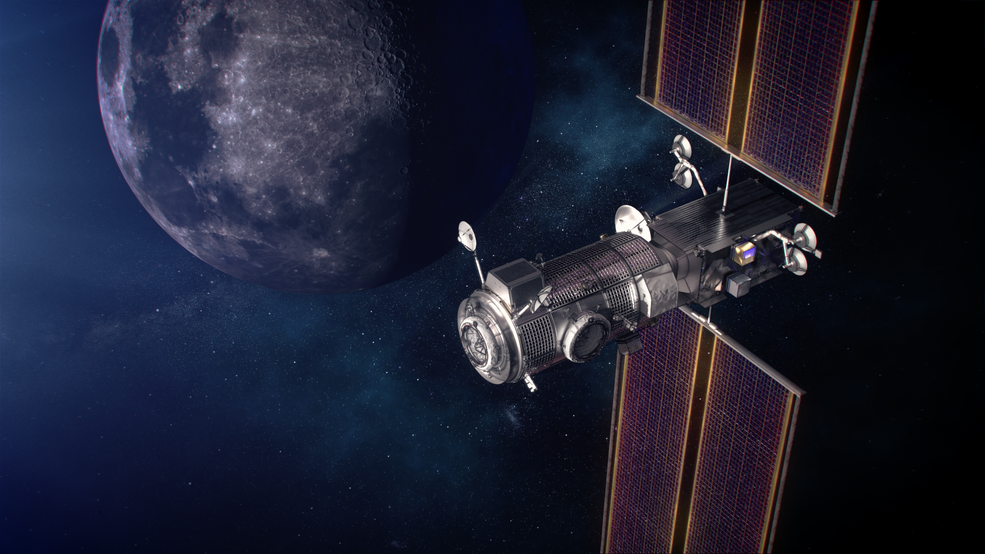Nasa awards SpaceX contracts to build backbone of Earth’s first moon base
SpaceX will provide launch services for Nasa’s Power and Propulsion Element and Habitation and Logistics Outpost that will assist the Gateway project

Nasa has awarded SpaceX a contract to launch parts of its Gateway program, a vital move towards the plan to send astronauts to the Moon for the first time in 50 years.
The work on the Gateway is a key part of the preparations for Nasa’s Artemis project, which intends to put humanity back on the Moon.
The Gateway program is an outpost that will orbit the Moon, allowing Nasa to provide support for sustainable, long-term missions to the moon’s surface.
It will be approximately one sixth of the size of the International Space Station, and float tens of thousands of miles above the Moon’s surface.
SpaceX will provide launch services for Nasa’s Power and Propulsion Element (PPE) and Habitation and Logistics Outpost (HALO) that will assist the Gateway project.
The PPE is a 60-kilowatt class solar electric propulsion spacecraft that will provide power, high-speed communications, attitude control, and the capability to move the Gateway to different lunar orbits.
HALO, meanwhile, are the pressurised living quarters where astronauts who visit the Gateway will work, as well as being the command and control infrastructure and docking hub for the outpost.
“HALO will support science investigations, distribute power, provide communications for visiting vehicles and lunar surface expeditions, and supplement the life support systems aboard Orion, NASA’s spacecraft that will deliver Artemis astronauts to the Gateway”, Nasa says.
The agency’s Artemis mission, which will take the first woman and the next man to the moon, aims to bring back lunar samples from the surface and sub-surface that could contain evidence of water – vital information scientists can use to develop plans for missions into deeper space.
Nasa also aims to establish an Artemis base by the end of the decade, located at the lunar south pole, as well as conducting experiments to understand the origin of the sun and our astronomical environment.
While the mission is scheduled to go ahead by 2024, it is doubt has been cast on whether that deadline can be met.
In November 2020, a report from Nasa’s inspector general said that challenges caused by the coronavirus pandemic, such as the closure of Nasa’s 18 major facilities, meant that developing the Space Launch System and the Orion spacecraft has had to be either delayed or suspended.
Join our commenting forum
Join thought-provoking conversations, follow other Independent readers and see their replies
Comments


Bookmark popover
Removed from bookmarks